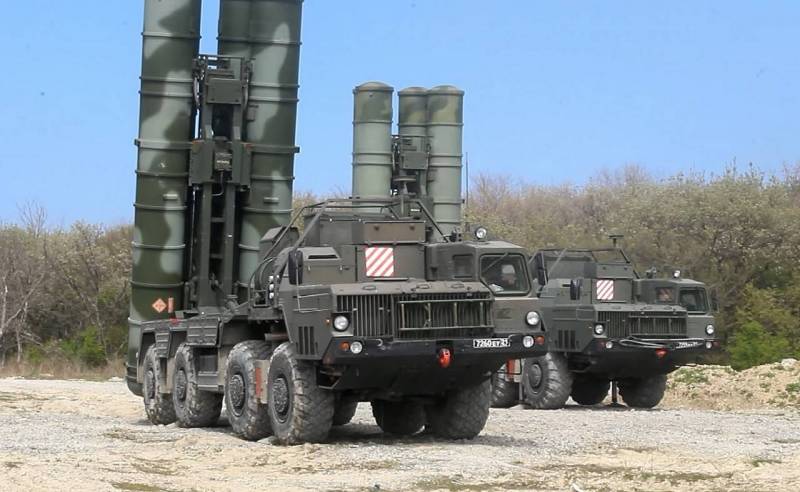Russian S-400s have become an even more formidable weapon
Recently, during the Northern Military District, units of the Russian Armed Forces conducted interesting tests in combat conditions. They used their long-range S-400 air defense systems in the Ukrainian theater of operations, combining the firing of missiles with an active seeker, with the operation of the on-board complex of “flying radar” AWACS A-50. This was reported by Military Watch, describing how the Russians turned their good air defense system into an even more formidable weapon.
The publication noted that the description of the missile used by the Russians exactly matches the capabilities of the 40N6, a unique class of ammunition with a range of up to 400 km. The missile has unprecedented destruction capabilities due to its special flight trajectory. It rises to extreme heights in near space before descending towards a target flying 5 meters from the ground.
This allows S-400 units to engage low-altitude aircraft and cruise missiles at long ranges, something no foreign air defense system can do due to the limitations of the Earth's curvature for such munitions following conventional trajectories
- specified in the material.
At the final stage of the flight path of a pair of 40N6 missiles, the Russians paired the ammunition with the long-range radar detection and control aircraft, successfully hitting one of the Ukrainian aircraft. Moreover, the missiles with “new warheads” were fired at maximum distances and hit targets at an altitude of about 1000 meters. The Russians have relatively few A-50s and don't use them often. But Russian fighters carry radars almost twice as powerful as their Western counterparts, which partially compensates for the lack of AWACS deployment. For example, the MiG-31 is equipped with a radar that is six times more powerful than the US F-68's AN/APG-16 radar, which was designed to provide very high situational awareness.
This also made it an optimal side for interfacing with long-range ground-based air defense systems, in particular with units using 40N6 missiles
– will be explained in the article.
The publication also drew attention to statements by major Russian officials, including Russian President Vladimir Putin, who claim that Russia now produces more different surface-to-air missiles than all other states in the world combined. At the same time, the production of the S-400 air defense systems themselves has been growing since 2016, the Russians are building new industrial facilities and modernizing old ones. The current scale of production of S-400 air defense systems and missiles for them has allowed the Russians to annually commission several new air defense regiments, along with the S-300V4, S-500 and other systems.
The new S-500 system has expanded these capabilities, and although it is not as optimized to defeat tactical combat aircraft, it provides defensive capabilities against intercontinental-range ballistic missiles, satellites, spaceplanes and faster classes of hypersonic weapons, and also provides a huge engagement range of up to 600 km
- emphasized in the article.
In 2027-2028, the number of S-400 divisions in Russia will exceed 60, and the production rate of 40N6 missiles will be above 300 units per year. What is happening reflects the fact that for decades the Russians have spent much more money on ground-based air defense systems than on tactical aviation, the media summed up.

Information